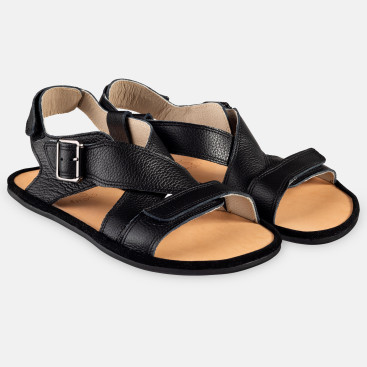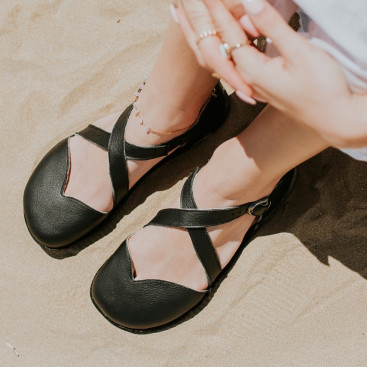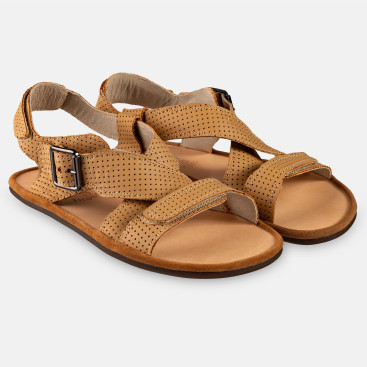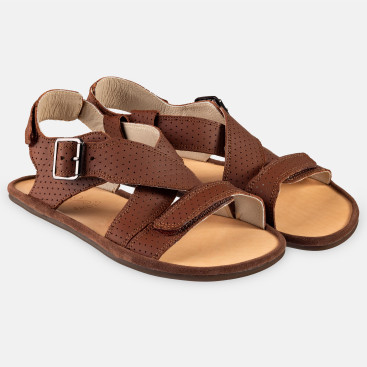What are barefoot sandals?
Barefoot sandals are a response to the growing need to return to natural walking. Their philosophy is based on the belief that the foot functions best when it can move, bend, stretch, and roll freely in harmony with its biomechanics. Unlike most traditional sandals, barefoot models are designed with anatomical fit and functionality in mind. They feature a wide toe box that lets the toes spread naturally, a flat sole (known as zero drop), a lightweight design, and great flexibility that allows the foot to respond to the ground almost as if barefoot.
One of their standout features is packability—minimalist forms and thin materials make them easy to fit into a carry-on. For many travelers and nature lovers, that’s a major plus.
Health first – the benefits of wearing barefoot sandals
Although the barefoot trend may seem new, it’s rooted in a deep understanding of human anatomy. Traditional sandals often force an unnatural gait. Stiff soles limit joint mobility, while narrow toe boxes squeeze the toes. As a result, users may experience strain, knee, hip, or back pain. Flip-flops and slides can be particularly problematic—they don’t stabilize the heel, requiring the wearer to constantly tense the toes to keep the shoe on. This can lead to strain and faulty movement patterns.
Barefoot sandals address these issues at the source. The lack of heel support ensures full contact with the ground, activating foot muscles and improving proprioception—the sense of body position in space. Movement becomes fluid and natural, and every step engages the entire foot structure, not just a part of it. That’s why barefoot sandals are recommended not only by wearers, but also by physiotherapists and orthopedists.
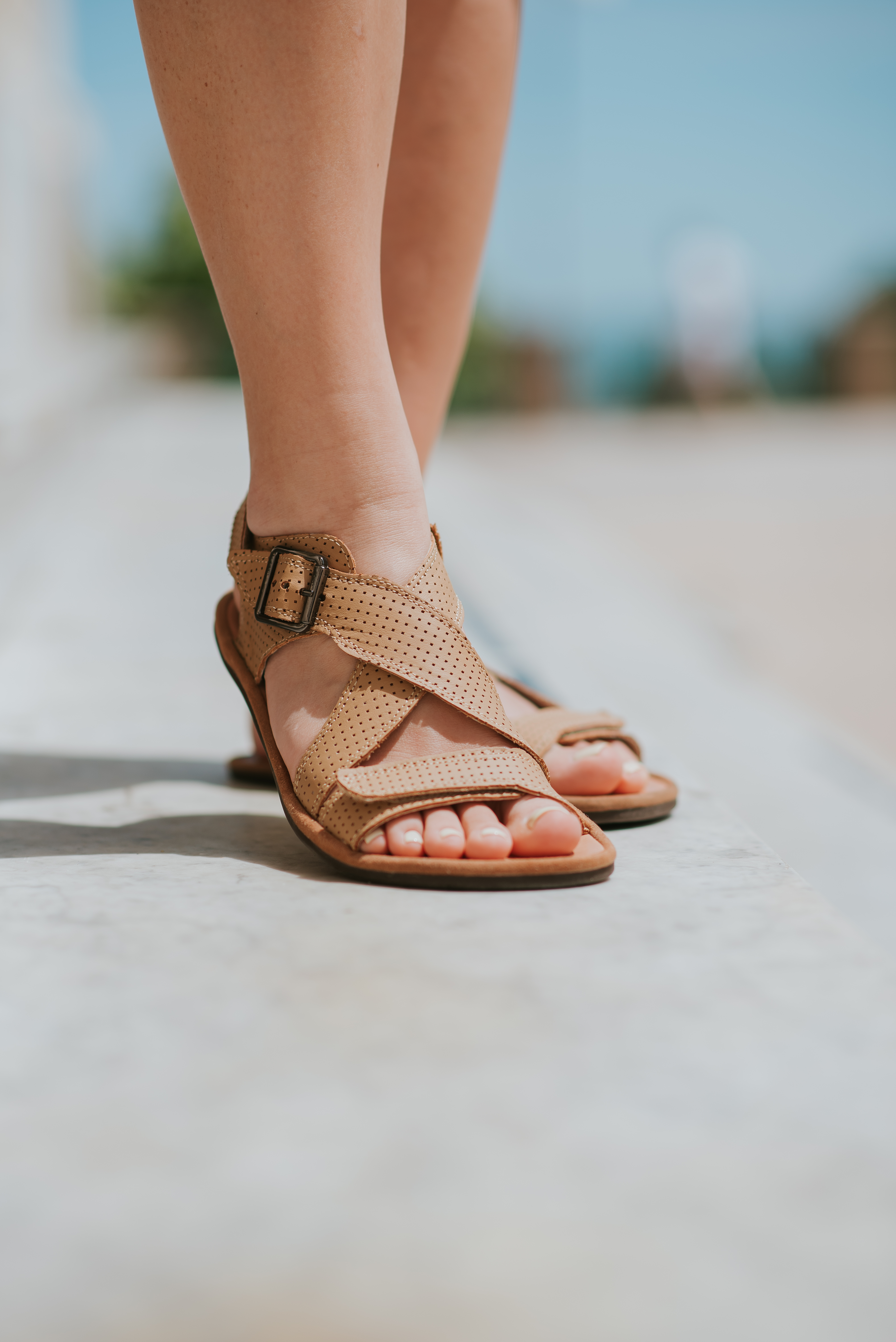




































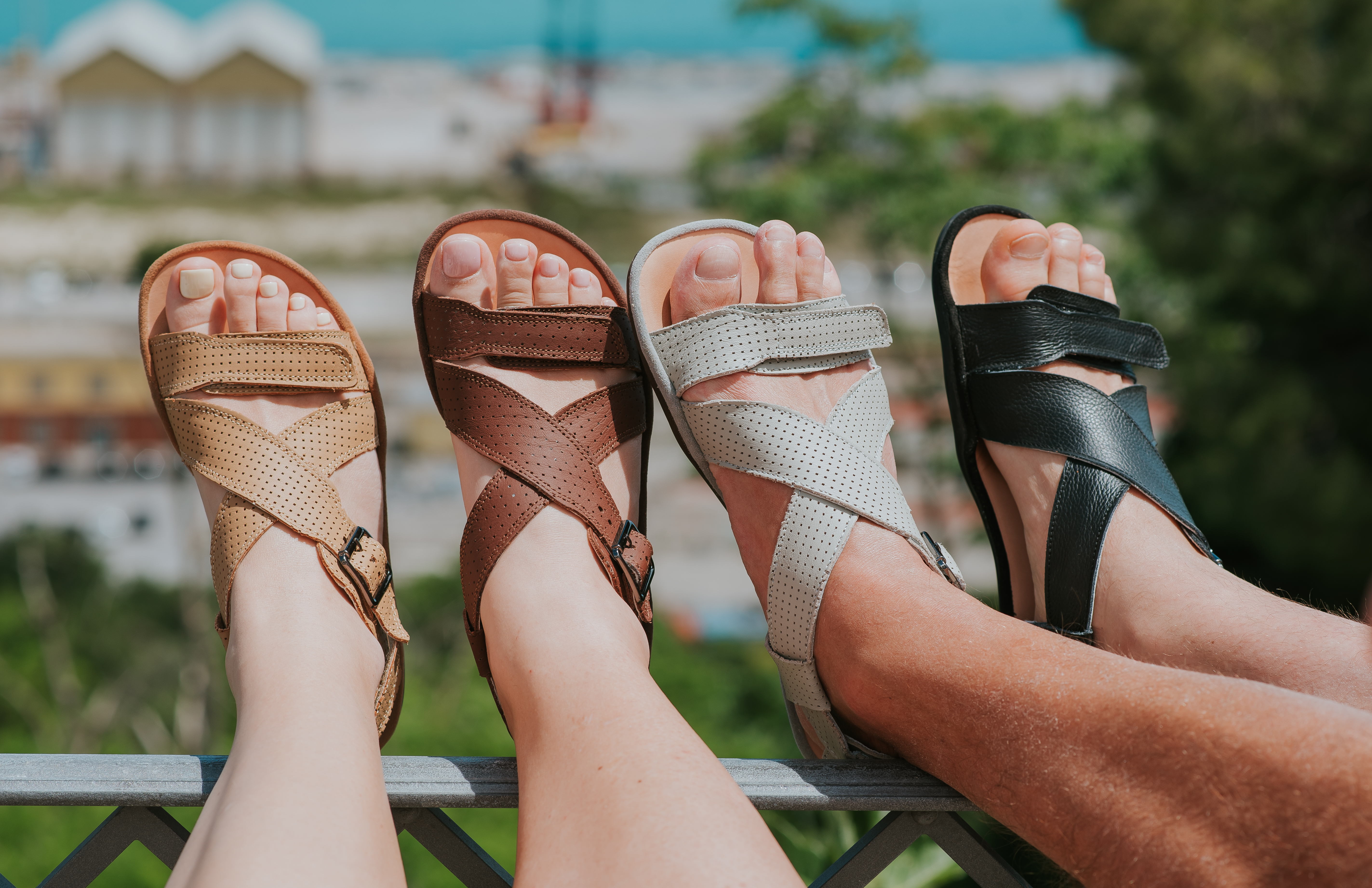
.jpg)
.jpg)
